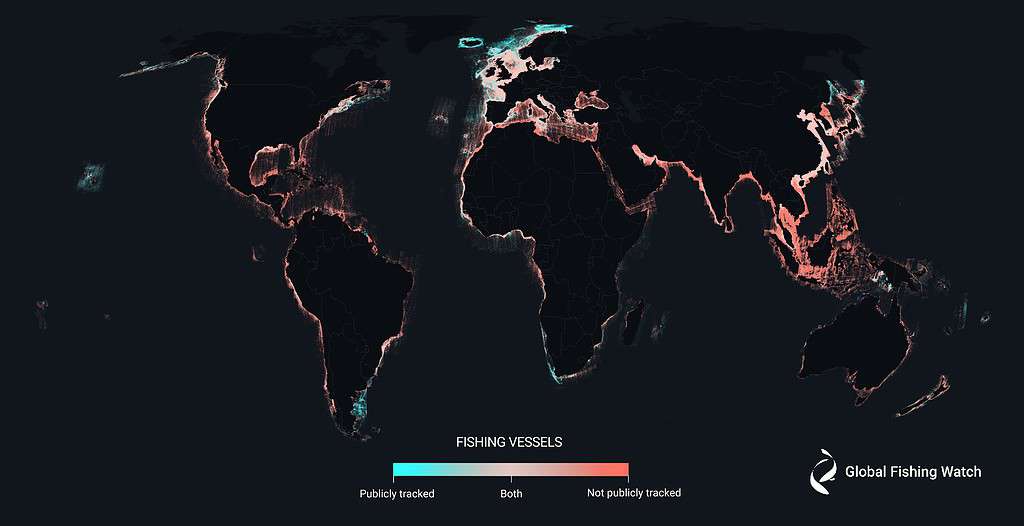On land, there are maps for every road and datasets for every human structure. In most places, it’s relatively easy to map extractive industries such as forestry and agriculture. In the ocean, however, it’s almost complete darkness. Most vessels don’t broadcast their location and aren’t detected by monitoring systems, and information on industrial activities is often held private. As a result, the world has no clear picture of who fishes what.

Dark fleets
In a new study, researchers have used machine learning and satellite imagery to create the first global map of large vessel traffic and offshore infrastructure. They found that 75% of the world’s industrial fishing vessels are not publicly tracked, mostly in Africa and South Asia, and that over 25% of energy and transport vessels are also missing from tracking.
“A new industrial revolution has been emerging in our seas undetected—until now,” David Kroodsma, director of research and innovation at the NGO Global Fishing Watch and co-lead author of the study, said in a news release. “This study helps eliminate the blind spots and shed light on the breadth and intensity of human activity at sea.”
Kroodsma and a team of researchers went through over two million gigabytes of satellite imagery going from 2017 to 2021 to spot vessels and offshore infrastructure in coastal waters. They synthetized GPS data with radar and optical imagery and identified the vessels that didn’t broadcast their position, likely fishing illegally.
Although not all boats are obligated by law to transmit their position, the presence of vessels not participating in public monitoring systems, commonly referred to as “dark fleets,” presents obstacles to the conservation and management of natural resources. Studies have found many dark fleets operating within various marine protected areas.

The researchers detected over 63,300 vessel occurrences between 2017 and 2021, with three-quarters of them not appearing in public monitoring systems. Activity was unevenly distributed, with 67% of all vessel activity happening in Asia. The new map also showed hotspots of illegal fishing activity, such as in the Korean Peninsula.
“Historically, vessel activity has been poorly documented, limiting our understanding of how the world’s largest public resource—the ocean—is being used,” Fernando Paolo, another study author, said in a news release. “By combining space technology with state-of-the-art machine learning, we mapped undisclosed industrial activity at sea.”
As well as looking at vessels, the study shows how human activity is changing the ocean. During the pandemic, fishing activity dropped by 12%, while transport and energy vessel activity remained stable. Offshore energy development surged during the study period. Oil structures rose by 16% and wind turbines more than doubled.
Most oil infrastructure is distributed among 13 oil-producing areas. The largest concentration of offshore oil infrastructure is in the Gulf of Mexico. The US, Saudi Arabia and Indonesia have a quarter of all infrastructure. Meanwhile, offshore wind development is so far mostly concentrated in northern Europe and China.
“Having a more complete view of ocean industrialization allows us to see new growth in offshore wind, aquaculture and mining that is rapidly being added to established industrial fishing, shipping and oil and gas activities. Our work reveals that the global ocean is a busy, crowded and complex industrial workspace,” Patrick Halpin, study author, said in a news release.
The study was published in the journal Nature.


